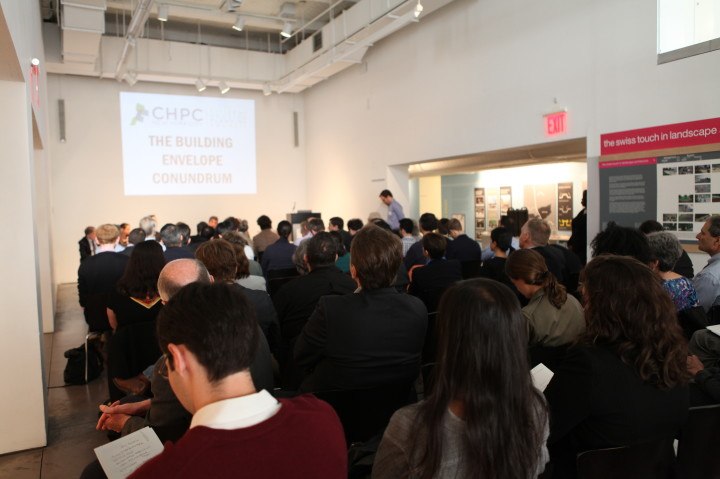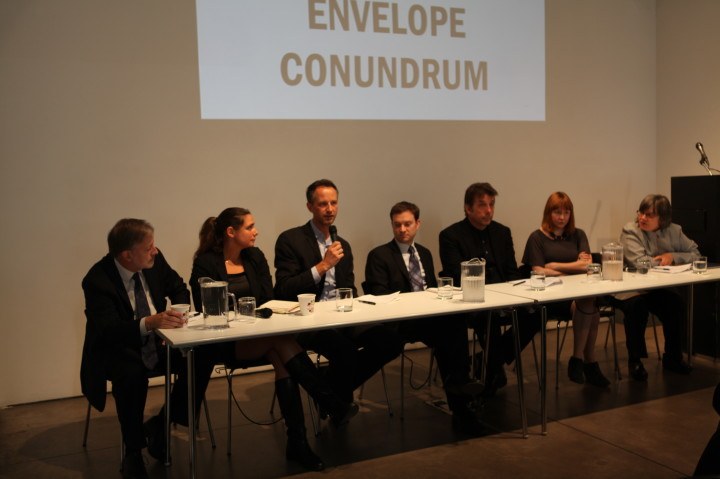Earlier this year, after listening to concerns raised by our board members, we began to investigate how outdated rules governing building envelopes within contextual zoning can sometimes result in fewer residential units being built. We examined seventeen sites to see how much the building envelope rules affected residential construction.
This morning, Friday, September 19, 2014, CHPC joined together with the New York City Department of City Planning (DCP) to discuss the findings of our study the Building Envelope Conundrum. The six-person panel took place at the Center for Architecture.
Those unfamiliar with the ins and outs of zoning code might ask, What is a building envelope? However, the room was abuzz with excitement as architects, designers, and builders eagerly awaited the opportunity to share their suggestions for revising the rules with the DCP staff.
After the authors of the study, Sarah Watson and Mark Ginsberg, presented the details of the CHPC study, moderator and CHPC Executive Director Jerilyn Perine introduced Howard Slatkin and Jeff Shumaker of the Department of City Planning. We want to hear from you, Slatkin told the crowd in his opening remarks. In addition to CHPCs deputy director Sarah Watson, Samantha Magistro, Managing Director of New Business at Bronx Pro Real Estate Development, Doug Woodward, Edison Properties, and Mark Ginsberg, FAIA, Founding Partner, Curtis + Ginsberg Architects, were also seated on the panel.
The rules governing dimensional limits of new buildings for contextual zoning were devised in 1987, and it is clear that much has changed since time. Many concerns were raised over the loss of usable floor area, and what impact this has on affordable housing projects. The panel presentations and audience feedback outlined many ways regulations could be changed to allow for increased floor areas, better quality apartments, and increased neighborhood benefits. Suggestions included easing height limits and rear yard setbacks or allowing for more envelope flexibility in exchange for floor area bonuses.
CHPC and DCP will be processing feedback from this event and look forward to incorporating all of the suggestions made as the work moves ahead.





